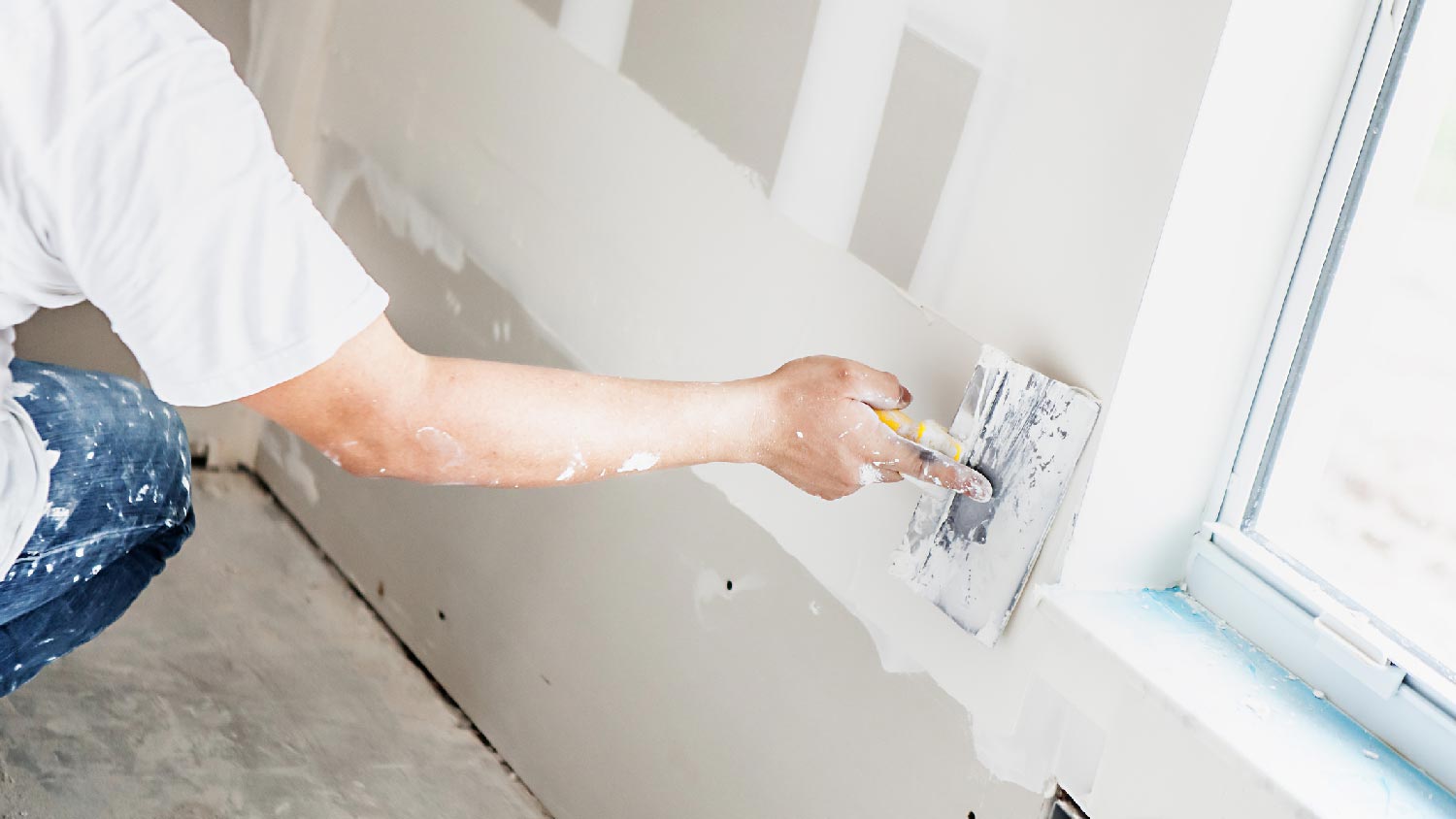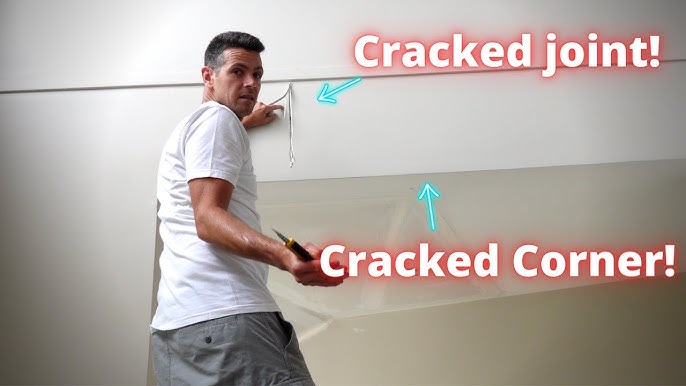Step-by-Step Approaches to Getting Flawless Drywall Repair and Installation
Accomplishing perfect drywall fixing and installment calls for a systematic approach. It involves comprehending the different kinds of drywall and the devices needed for the job. Correct location preparation is crucial before beginning any kind of job. Drywall Repair Ogden UT. Each step, from patching holes to setting up brand-new sheets, needs focus to information. The process doesn't finish with setup; ending up methods are vital for a refined appearance. The following actions will guarantee a smooth result, but just what do they entail?
Understanding Drywall Types and Devices Needed

The installation tools are similarly essential. An utility blade is essential for reducing drywall sheets, while a drywall saw can help in making accurate cuts for outlets or components. T-squares guarantee accurate measurements, and drywall screws or nails secure the panels to wall studs. Furthermore, a drywall lift can assist in the installment of huge sheets, minimizing physical strain. Experience with these tools and types substantially adds to the performance and quality of drywall projects.
Preparing the Area for Repair Service or Installment
Preparing the location for drywall repair or installation is important to ensure a effective and smooth process. The surrounding space must be cleared of furnishings and other obstacles to offer ample working room. This not only guarantees security yet also prevents damages to personal belongings. Next off, it is vital to cover the floor with decline towels to catch any type of debris or dirt produced during the work.
In addition, the wall surfaces ought to be inspected for any kind of loose paint or wallpaper that may disrupt bond. Removing these components produces a clean surface area for the new drywall. Prior to beginning, it is recommended to switch off power to electrical outlets or fixtures around. Making sure sufficient lighting in the work space will even more improve visibility and focus throughout the repair work or setup procedure. drywall contractors. By thoroughly preparing the area, one prepares for a successful drywall task
Step-by-Step Process for Patching Holes

Covering openings in drywall needs an organized method to guarantee a seamless repair. The primary step includes evaluating the size of the opening. For tiny holes, a patching compound might suffice, while larger holes require a patch. Next off, the damaged location needs to be cleaned and prepared by eliminating any type of loose debris.
For tiny openings, applying spackling compound with a putty blade is suggested, smoothing it over the hole and feathering the edges. As soon as completely dry, fining sand the location ensures a smooth finish. For larger openings, a drywall spot must be cut to size, positioned over the opening, and safeguarded with screws. After mounting the patch, the same spackling process is duplicated, adhered to by sanding.
Lastly, the patched area has to be topped and painted to match the surrounding wall surface. This precise process assures a professional look and prolongs the straight from the source lifespan of the fixing.
Setting Up New Drywall Sheets: A Comprehensive Overview
Setting up brand-new drywall sheets needs careful preparation and execution to ensure a sturdy and aesthetically attractive coating. The area needs to be measured properly to identify the number of sheets required. It is important to choose the appropriate thickness, usually 1/2-inch for interior wall surfaces and 5/8-inch for ceilings or fire-rated applications.
Next, the studs or framework ought to be checked for any kind of abnormalities, making sure they are aligned and appropriately spaced. When putting the drywall sheets, they need to be placed flat to decrease joints and improve structural stability. A drywall lift can be helpful for overhanging installments.
Attaching the sheets with drywall screws at ideal periods makes sure a safe and secure installment. It is very important to countersink the screws a little listed below the surface area to plan for the finishing process. Following these guidelines will result in a solid structure, prepared for the following action in drywall ending up.
Ending Up Touches: Insulation, Mudding, and Sanding Techniques
As soon as the drywall sheets are firmly secured, the focus shifts to the finishing touches that will certainly give a sleek look. This procedure begins with taping, utilizing either paper or fiberglass harmonize tape to cover the joints in between sheets. The tape assures a smooth change, reducing the danger of fracturing. Following insulation, mudding is vital; a joint compound is applied over the tape to load spaces and develop a smooth surface. Commonly, multiple layers are necessary, every one feathered out even more than the previous to decrease presence.
After adequate drying time, fining Read Full Article sand is the last action in achieving a flawless coating. A fine-grit sandpaper is used to smooth the dried out substance, assuring there are no flaws or bumps. Focus to detail throughout this stage is substantial, as it significantly affects the general look of the wall. Completion result ought to be an also, professional-looking surface all set for priming and painting.
Often Asked Questions
Exactly how Do I Pick the Right Drywall Thickness for My Task?
To select the right drywall density, think about the project's objective, location, and architectural requirements. Criterion thicknesses consist of 1/2-inch for general usage and 5/8-inch for fire-rated applications, guaranteeing resilience and conformity with building ordinance.

Can I Mount Drywall Over Existing Drywall?
Yes, mounting drywall over existing drywall is feasible. Nonetheless, it is crucial to ensure the underlying surface is protected and totally free from damages. Appropriate fastening and factor to consider of density are critical for an effective setup.
What Are the Best Practices for Drywall Disposal?
The ideal techniques for drywall disposal include recycling when feasible, my site using local waste management services, and following guidelines for hazardous products if relevant. drywall contractor. Properly sealing and labeling waste warranties conformity and security during disposal
How much time Should I Await Mud to Dry Prior To Sanding?
Generally, one ought to wait 24 hr for drywall mud to dry before fining sand. Nevertheless, drying time can differ based on humidity and temperature, so looking for a firm appearance is recommended prior to continuing.
Exist Eco-Friendly Drywall Options Available?
Yes, environmentally friendly drywall alternatives are available. These options often use recycled products, low-VOC adhesives, and lasting production techniques, lowering environmental influence while providing efficient insulation and longevity for various building and improvement projects.
An utility knife is crucial for reducing drywall sheets, while a drywall saw can help in making accurate cuts for outlets or components. Preparing the location for drywall repair service or installation is important to assure a efficient and smooth process. Patching holes in drywall needs an organized strategy to guarantee a seamless repair work. Mounting brand-new drywall sheets calls for mindful planning and implementation to guarantee a strong and aesthetically attractive coating. Yes, installing drywall over existing drywall is possible.